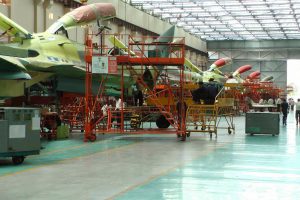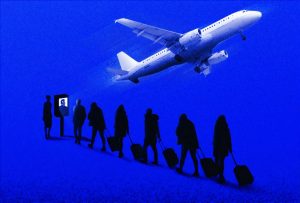 By Vivek Pattanayak in Bhubaneswar, September 23, 2022: Relationship among the sovereign States is based on political, economic, cultural, geographic, and historical consideration. Economic relations are based on trade, commerce, business etc. These factors also impact on relationship among countries bilaterally, regionally, and globally.
By Vivek Pattanayak in Bhubaneswar, September 23, 2022: Relationship among the sovereign States is based on political, economic, cultural, geographic, and historical consideration. Economic relations are based on trade, commerce, business etc. These factors also impact on relationship among countries bilaterally, regionally, and globally.
Multilateral relationship can be shaped on the basis of ideology (Western democracies, Communist Bloc), geography (EU, OAS, OAU, Arab League, SAARC etc.) and commonality of interest (BRICS, MURCOSUR, ASEAN).
Of all relationship economic interaction among the States play a significant role in shaping political equation among the countries. In all these areas diplomacy is the instrument through which understanding, agreement, and inter-relationship are arrived at. When the representatives of the countries either politicians, permanent civil servants or professional diplomats meet over an issue discussion, negotiations, consultations form the basis of the end result.
Art of diplomacy at bilateral framework may differ from that at multilateral level.
Having given this introduction of international relations and diplomacy, it would be pertinent to state that economic relationships are shaped by domestic policy relating to manufacturing, service, and infrastructure.
Civil aviation per se is a service activity. It has grown since the end of the Second World War phenomenally. Almost each country of political eminence has developed its airline and airports. Some have also encouraged manufacturing of aircraft, engines, avionic, air navigation equipment, and aviation security materials.
Air transport sector has played a significant role in determining economic relationship between the countries bilaterally and multilaterally in terms of trade, commerce, tourism etc. Cargo traffic by air has a substantial share of global freight market.
In last seventy-five years international civil aviation has grown. To regulate this growth ICAO, a specialized agency of the UN system was established under a multilateral legal instrument called the Chicago Convention. It has established international standards, recommended practices, guidance materials and it has determined air routes based on negotiations among member States of the International Civil Aviation Organization.
 Manufacturing of civil aircraft and its components is subject to national and international regulations for which national and regional regimes have existed. Environmental factors have impacted international concern in aviation. It started with noise pollution, and it has gone into the area of carbon emission.
Manufacturing of civil aircraft and its components is subject to national and international regulations for which national and regional regimes have existed. Environmental factors have impacted international concern in aviation. It started with noise pollution, and it has gone into the area of carbon emission.
All these matters are negotiated at multilateral platform. In addition, the regional alliances have developed. Apart from the fora of the European Union, OAU, OAS, the European Civil Aviation Commission, the African Civil Aviation Commission, ASECNA, the Latin American Civil Aviation Commission, COSECNA etc. the Arab Civil Aviation commission in the Middle East and in the past DGCA Conferences in Asia Pacific Region functioned as the platforms for civil aviation matters. Both at regional and global level a plethora of negotiations do take place in addition to bilateral level in matters relating to air navigation, technical cooperation and safety and security.
Exchange of traffic rights among the countries constitutes a key component in relationship among countries. They included in early days first, second, third, fourth and fifth freedom which deals with over flight, stoppage for technical purpose, carrying of passengers between the countries, and to the third countries.
Now they cover sixth, seventh, eighth, ninth and tenth freedom dealing with carrying passengers over own country from other countries, operating on domestic routes bilaterally, between two other countries without touching own country and carrying domestic passengers in third countries etc. National civil servants and diplomats play a key role in shaping agreements and understanding. At the global level negotiations do take place about open sky and passenger facilitation and cargo movements etc.
 Such is the vital role air transport plays; in many countries air transport negotiation is headed by the representative of the Department or Ministry of External Relations. In USA it is by the State Department. Canada follows the same practice. In almost all countries the representative of foreign ministry is invariably represented in these negotiations.
Such is the vital role air transport plays; in many countries air transport negotiation is headed by the representative of the Department or Ministry of External Relations. In USA it is by the State Department. Canada follows the same practice. In almost all countries the representative of foreign ministry is invariably represented in these negotiations.
Even a small country like Lesotho when it wanted to sign air services agreement with India, its ambassador came all the way from China accompanying their national delegation as they had no embassy in Delhi.
Some four decades ago when I began my association with civil aviation sector a veteran career diplomat then the Ambassador of Norway to India told me that air services negotiations were the toughest international negotiation he had ever managed in his career. It always involved both economic and political issues. Some countries give a great priority to the civil aviation sector particularly to their national carrier. Netherlands is one such country.
When the Dutch lost the East Indies (with independence of Indonesia ), their government to assuage the feelings of the domestic audience famously stated, “We have lost the colonies, but we still have Queen and KLM”.I saw that importance in real diplomacy when in 1985 the Dutch Transport Minister Nellie Smith-Croes came with civil aviation delegation. They were looking for turn-around flight rights to Delhi. She revisited within a fleeting period and met the then Prime Minister of India. Few months later Mr. Lubbers, who was prime minister of Netherlands met the Indian prime minister for the same reason, more liberal traffic rights for KLM.
When India was looking for traffic rights to Tokyo during the bilateral talk the Head of the Civil Aviation Department raised the issue regarding blockade at Raxaul on Indo- Nepal border, totally unrelated matter to civil aviation. This was one way of expression of the Japanese protest on behalf of a small country. This shows civil aviation can be used as a point of leverage in diplomacy.
 When India reopened the relationship with China in 1988 after the 1962 war, the first important negotiation was done by sending a delegation on civil aviation which paved the way for air services agreement between the two countries. In fact, the agreement was signed in the presence of the Prime Ministers of the both the countries. This shows how civil aviation has played a part in diplomacy.
When India reopened the relationship with China in 1988 after the 1962 war, the first important negotiation was done by sending a delegation on civil aviation which paved the way for air services agreement between the two countries. In fact, the agreement was signed in the presence of the Prime Ministers of the both the countries. This shows how civil aviation has played a part in diplomacy.
When India sought closer political ties with the Arab world, civil aviation negotiation preceded in respect of Jordan Kuwait, UAE, and Yemen.
Indo-USA air services agreement was revised in 1964 towards a more liberal framework. It was at the behest of US in the aftermath of China war when India sought US military assistance. Renegotiation after 25 years was an arduous task which ultimately resulted in more traffic rights to India.
During the heyday of the Soviet Union air services agreements included operations of IL 62M under wet-lease agreement and TU 154 operated on domestic route under similar wet-lease agreement. Buying of Soviet built civil aircraft was in advanced stage of negotiation when the Soviet Union collapsed.
Traffic rights were given to the Yugoslavian Airline to operate to Calcutta since India and Yugoslavia were close politically. CSA, Tarom and YAT enjoyed bilateral traffic rights. India’s closeness to the Warsaw Pact countries brought air services from these countries. During heyday on NAM and AFRO-ASIAN Solidarity, Air India flew to a number of countries in Africa, Asia. Turkey and India signed air services agreement on the eve of visit of Turgut Ozal to India.
In the multilateral forum like ICAO some civil aviation matters carry political overtone. The Korean aircraft destruction over Sakhalin and Iranian aircraft shooting down by US navy created political tension among the political grouping of countries. Debates in the Council take a political character. Pan Am crash over Lockerbie produced a new legal instrument, MEX Convention.
Kanishka Crash brought amendment to Annex 17.While Kanishka Crash was sidelined by the West, Lockerbie became a hot topic bringing a meeting of the Council attended by Ministers. The entire Western group was joined in their diplomacy to focus on a new multilateral treaty.
Sale of civil aircraft by national carriers also involved flurry of diplomatic efforts. Air Bus and Boeing Sales always received political attention. While USA was alone for Boeing, France, UK, and Germany and even Spain was continually active for Air Bus. The Bangalore A320 crash brought the French ambassador to the focus even at the level of ICAO. Rivalry between Canada and Brazil for sale promotion of Bombardier and Embraer could be visible even at multilateral level.
The European diplomacy used to be much more aggressive than that of developing countries in the past in matters like trade and commerce including civil aviation.
Sad to state national administrations and multilateral diplomacy did not swing into action to prevent spread of pandemic although both WHO and ICAO had forewarned and suggested measures at the preliminary stages. International regulations involving public health covered international flights and international airports when WHO declares Public Health Emergency of International Concern. International civil aviation was the most important vehicle for global spread of virus.


Leave a Reply
Be the First to Comment!